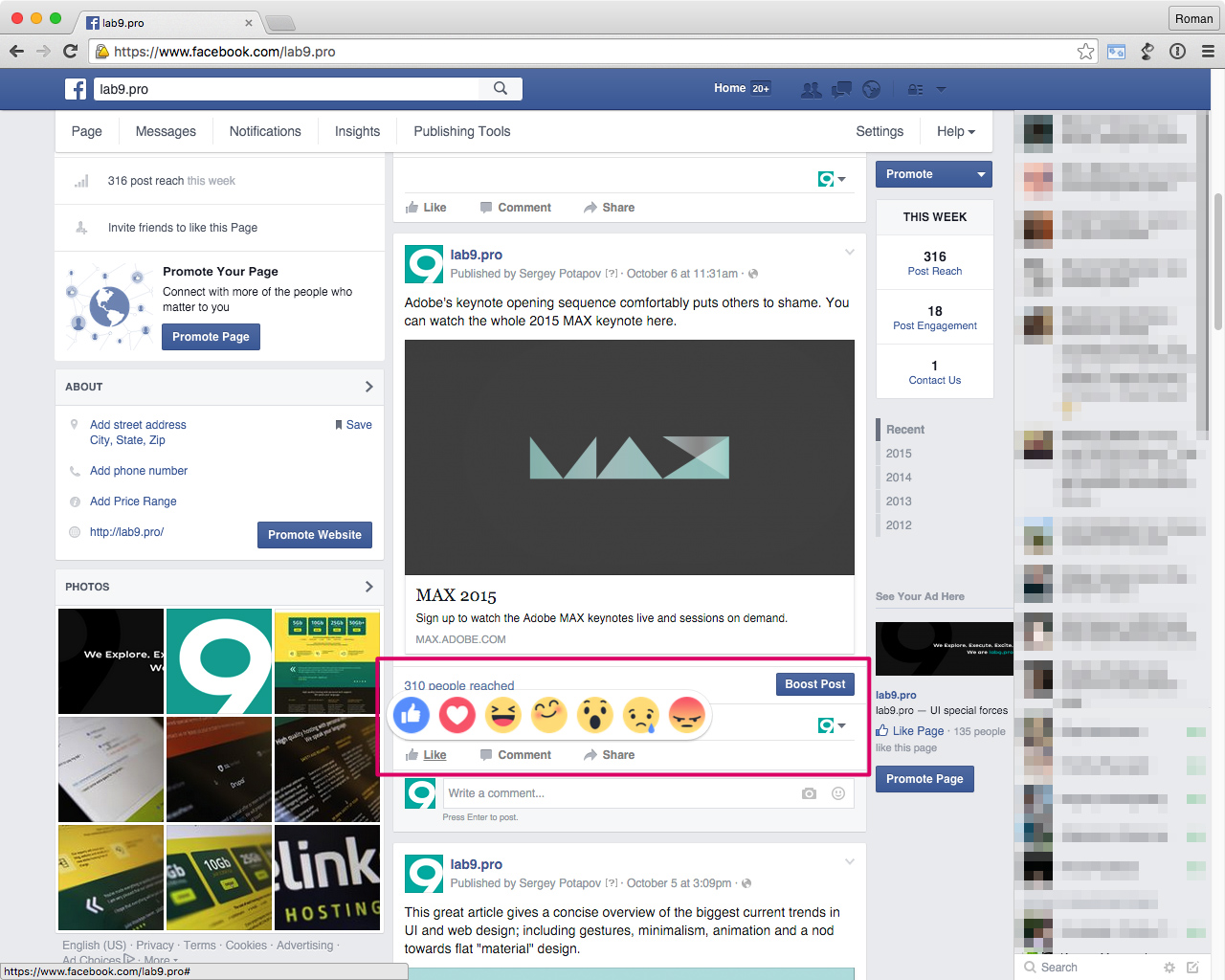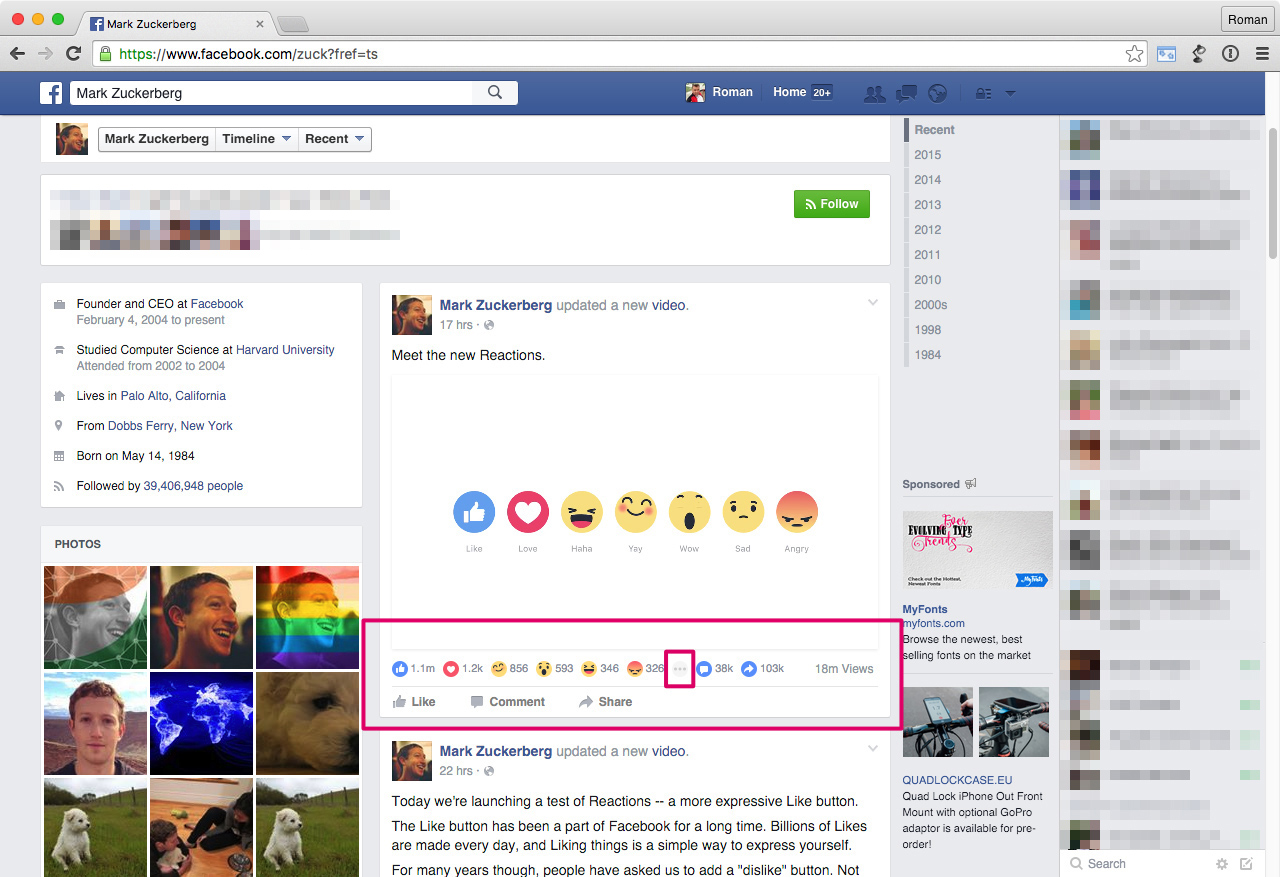New emotions on Facebook. A brief analysis of the functionality and its logic

For many years, a lot of questions have raised questions and confused people on Facebook, which initially relied only on the “Like” rating, completely omitting and ignoring the negative “Dislike” rating. To most people, such a move seems illogical. After all, if I do not like the publication, I should be able to say, “Uh, not interesting!”
But Facebook very intelligently continued to bend its line and did not touch this option, and here's why:
')
First, it extremely simplifies and speeds up decision making for users. After all, do not think! If you do not like it - scroll further, but like it - press “Like”, and period! Obviously, it's much easier for visitors to interact with simpler interfaces.
Secondly - and this is much more important - having only the “Like” button, authors and content consumers associate all publications exclusively with positive emotions. Relatively speaking, the absence of a negative assessment generates exclusively positive emotional connections with the service itself. “We have no bad. We have either good or very good, hehe! ”. And this is a brilliant move from Facebook.
New “Reactions”
And yesterday, on October 8, Facebook announced and began to integrate a comprehensive palette of positive ratings. Hovering the mouse over the link “Like” new emotions appear: “Love / Haha / Yay / Wow / Sad / Angry”.
Again, there is no “Dislike” ...
At first glance, such a move looks very strange and unjustified. Why this particular solution? It seems that Facebook is trying to move to a qualitatively new level of interaction with users - to crawl under their shirts and find out what they have in mind - and for this dry “Like” is not enough. Facebook wants to know what you feel, what emotions you experience by reading this or that note, and not just when you post or fumble your content. In fact, Facebook has already begun to enter it long ago through the function “Indicate what you are doing or feeling.”
Now all this is collectively called “Reactions”. This is a very intimate and subtle interaction with 1.44 billion (as of March 31, 2015) active users across the planet. And this kind of data about users can theoretically be very useful for the same special services developing and controlling information campaigns and wars in the world, not to mention the official sources of Facebook's revenue through advertising and, accordingly, targeting. A trivial example: a user who today has a lot of “Sad reactions” can see in his tape an advertisement for a new comedy film.
I have been engaged in graphic design, corporate identity, design and analysis of interfaces for various devices (from desktop / mobile to terminals) for almost 20 years, and after consulting with my colleagues from lab9.pro, we brought out very obvious disadvantages in the implementation of Facebook.
What is questionable:
- Too long a delay with hover is about 1.5 seconds after hovering the mouse over the icon. During this time, the user is likely to lose focus. In mass social networks, decision making and its implementation should be much faster.
- When displaying alternative reactions, the “Like” option is again duplicated. As a result, two identical buttons are located at a distance of 20px from each other. This is meaningless, because the user could already click on “Like” in text format if his solution was aimed specifically at “Like” and not at a different emotion.

- The order of the “Love / Haha / Yay / Wow / Sad / Angry /// Shares /// Comments” reaction sequence under the messages does not correspond to the order in the menu when choosing the reactions themselves and when viewing statistics on the reactions, which is simply a trivial inconsistency. In addition, the series of statistics of reactions under the messages does not fit the width of the message, but revealing additional information by clicking another icon “...”, we again see another sequence of emotions, as well as the icon “x” to close the window overlapping part of the statistics on the collected reactions . The absurdity for a company of this size, working with solid budgets.


- If we leave the output of statistics under the post, then it would be logical to offer a shortcut, and allow the user to click directly on the icon “Love / Haha / Yay”, etc. to immediately add your voice, and not go through the whole procedure “Like”> hover> read options> select> click.

Entering the “Dislike” button by Facebook is still questionable. By and large, the “Like” function with new reactions kills two birds with one stone. If there are many reactions, we see that people like it. If they are few, we see that people do not like.
Source: https://habr.com/ru/post/268567/
All Articles